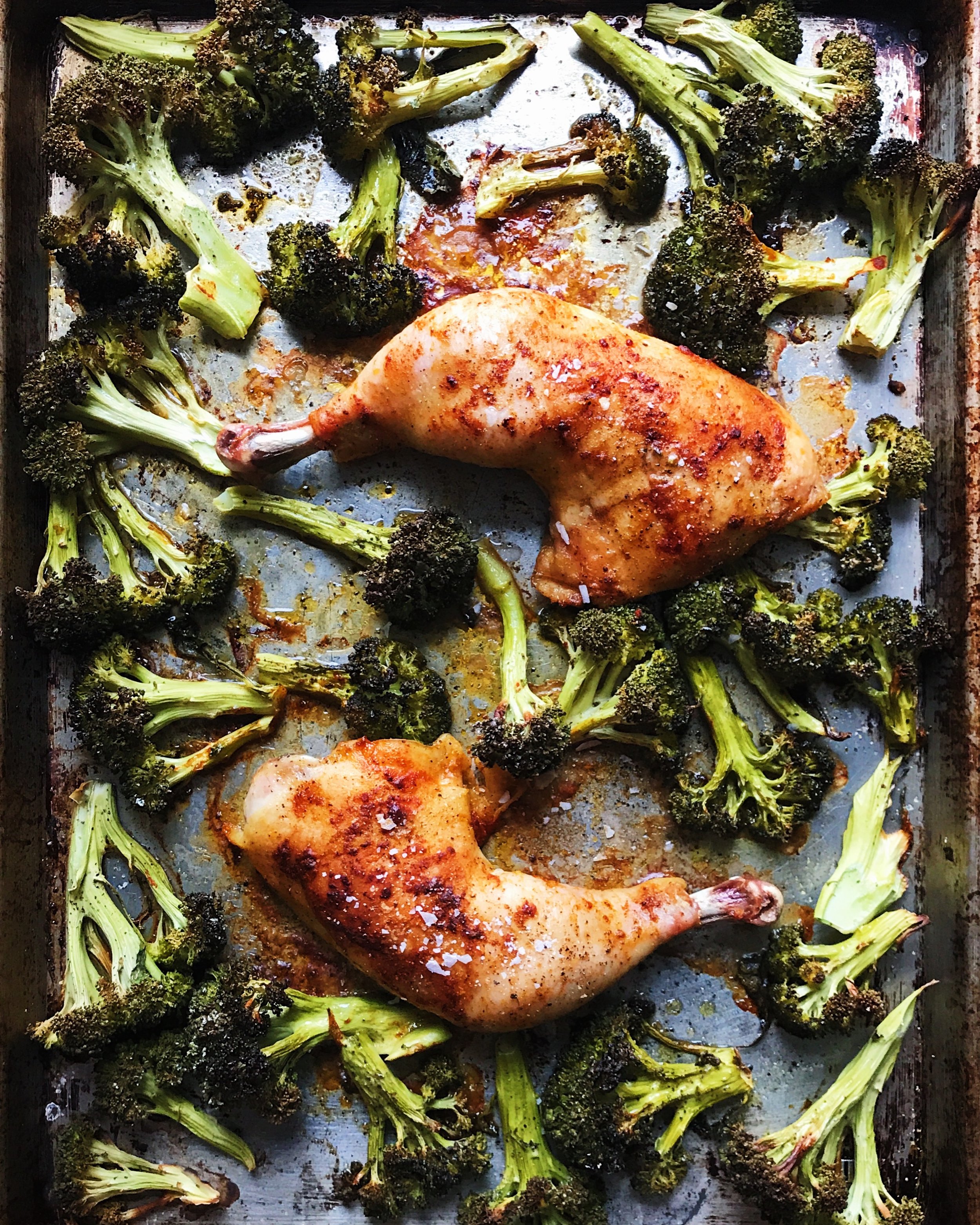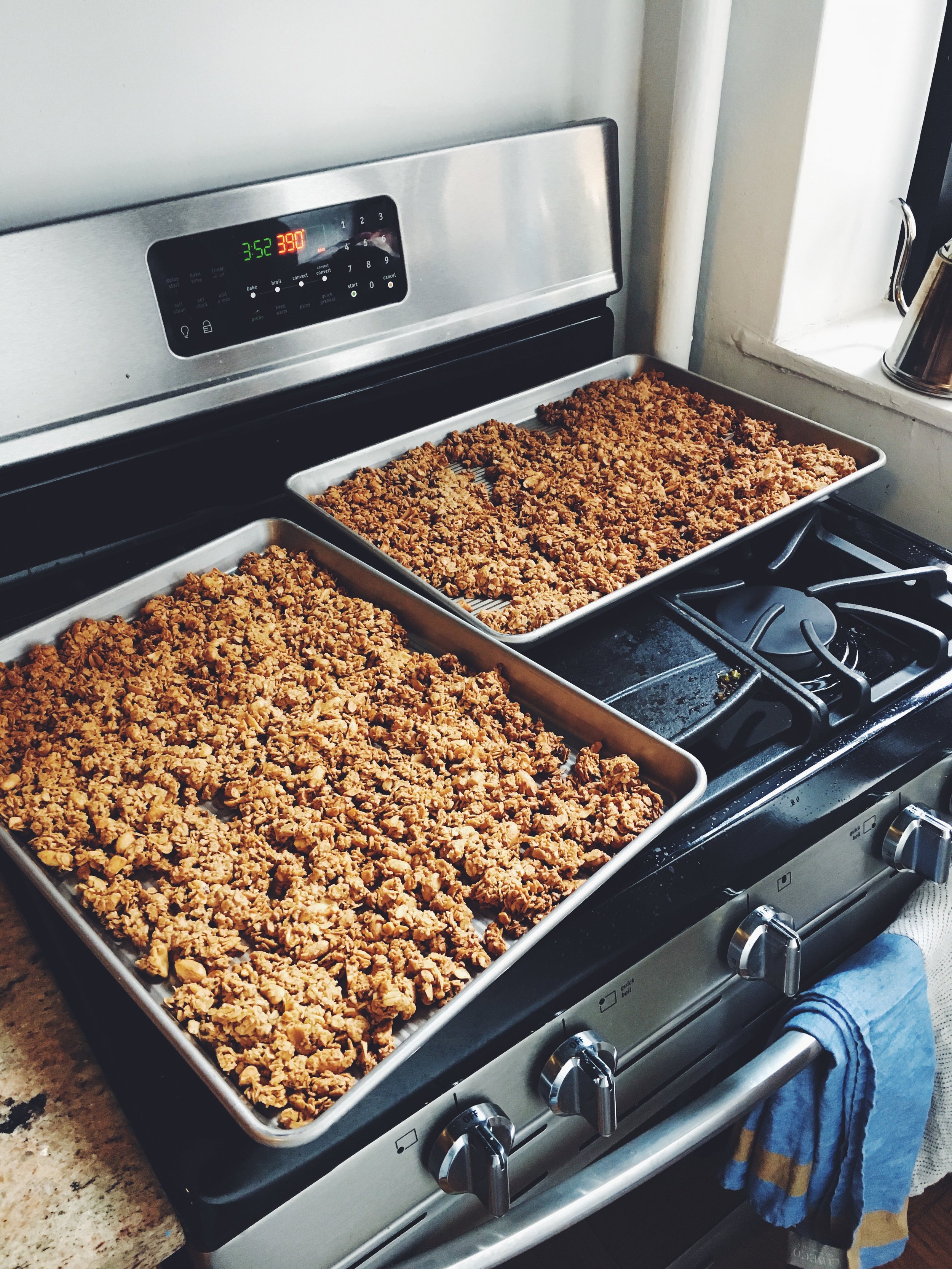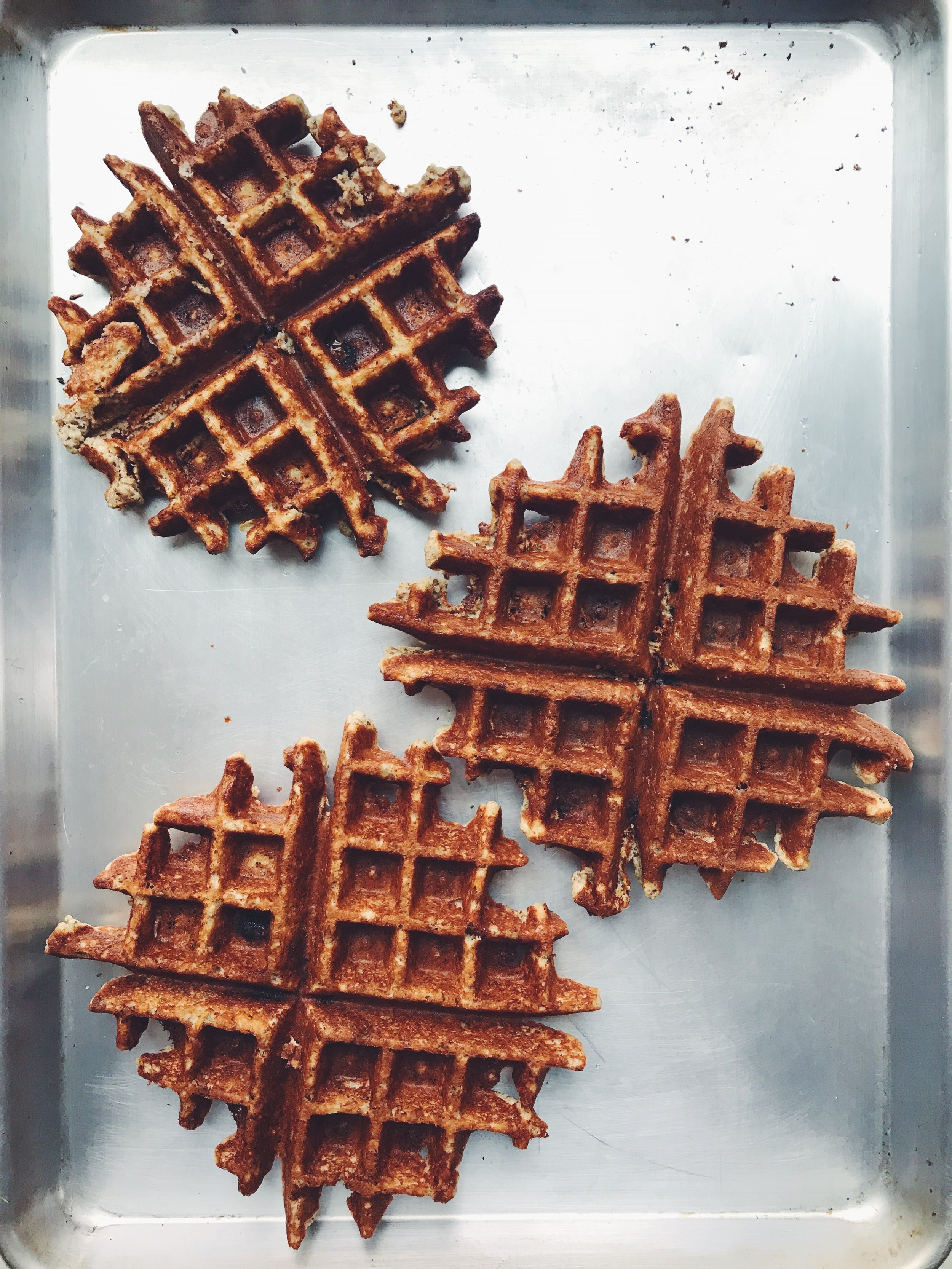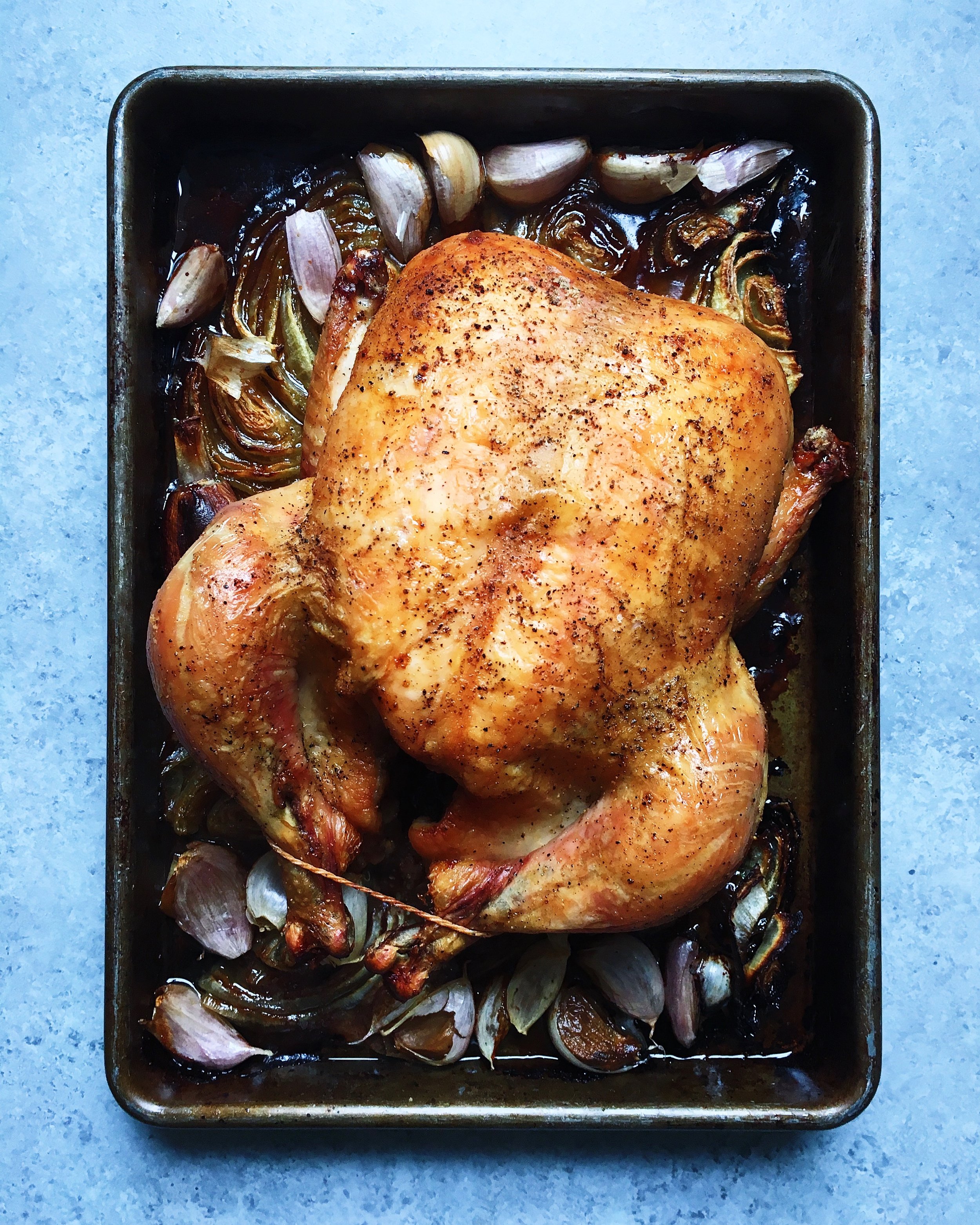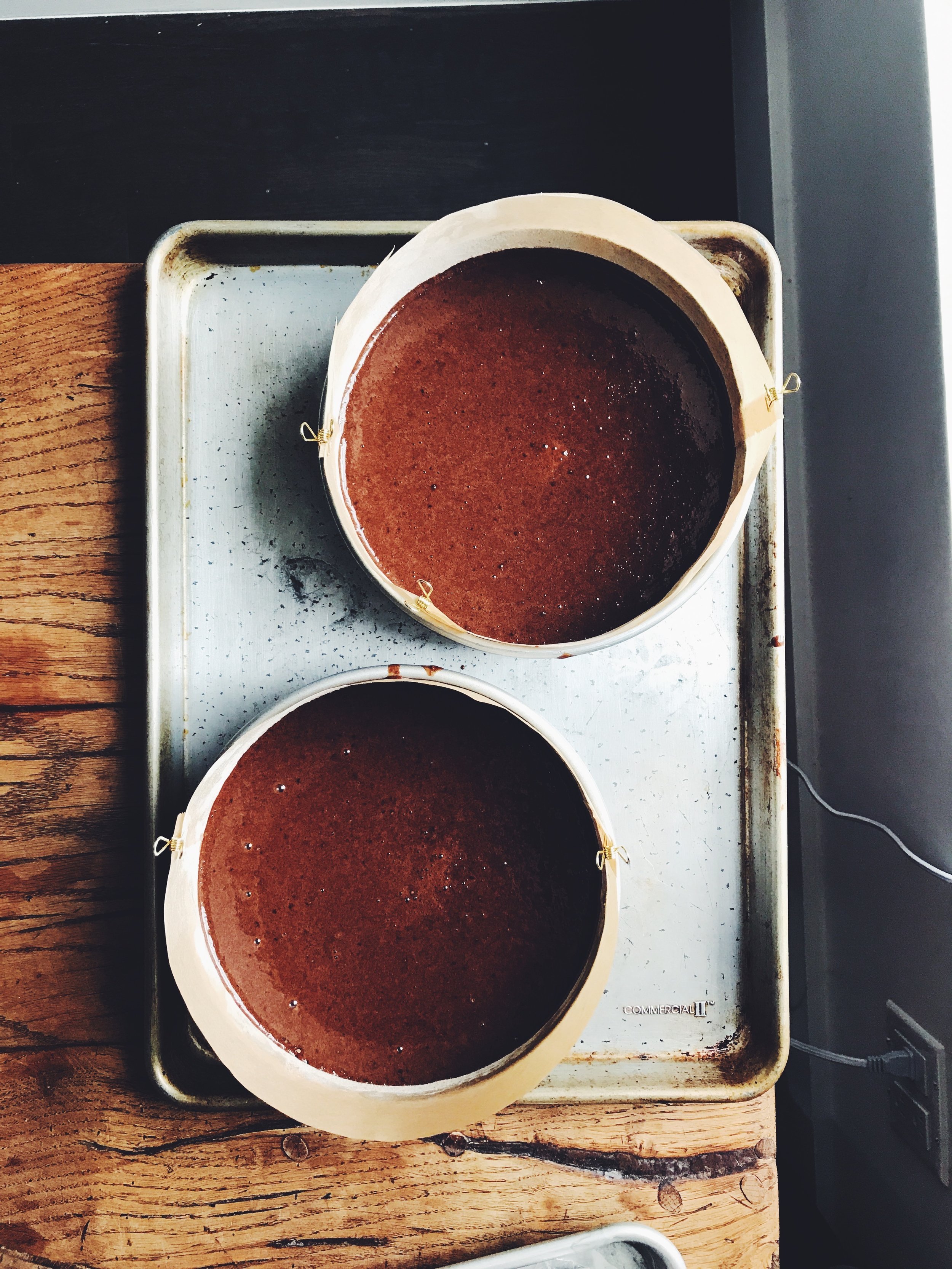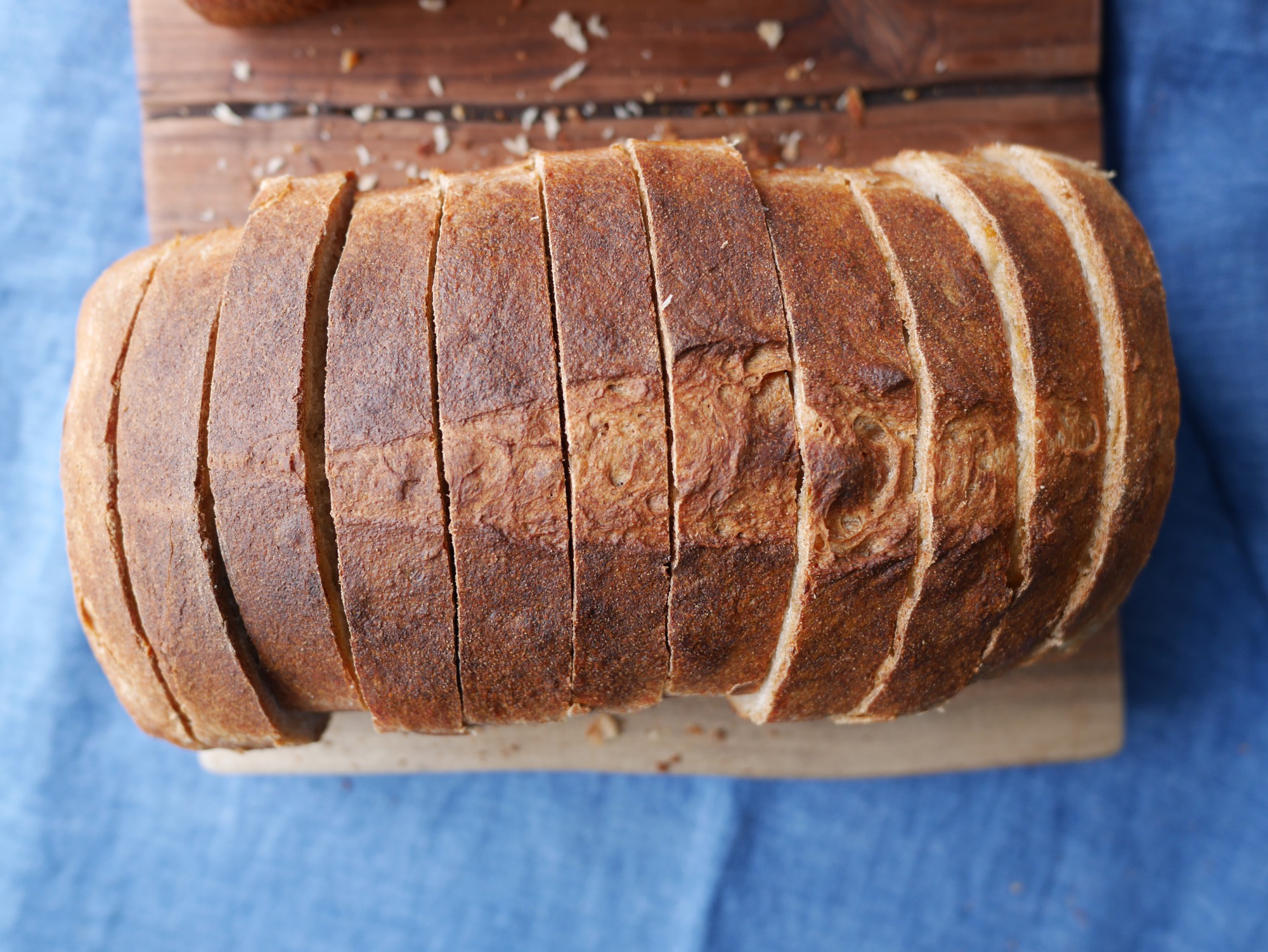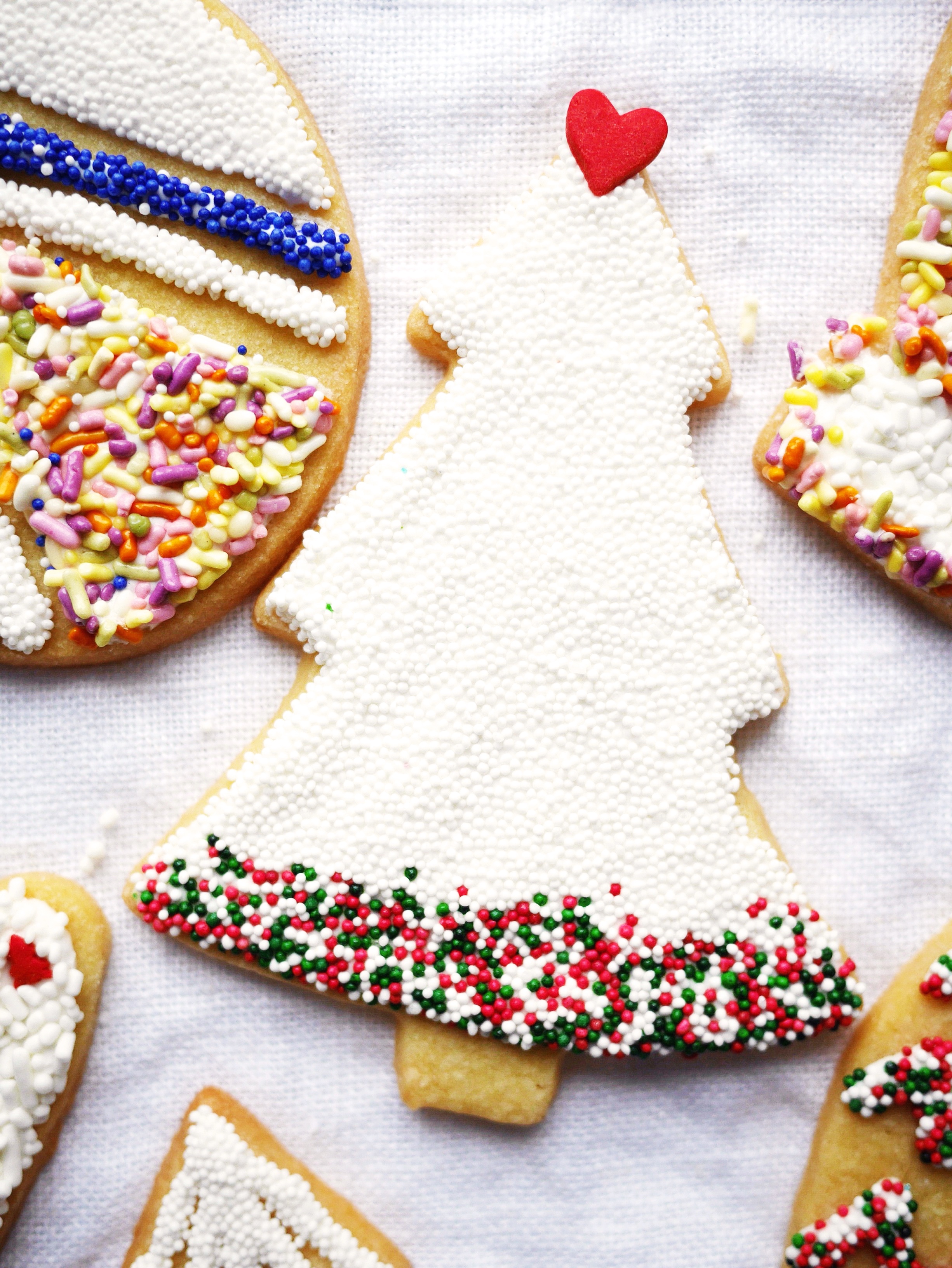Two healing meals that I cooked thanks to my stocked fridge, freezer, and pantry.
I’ve started off the new year so sick I can barely move. So sick that were I to cry for help, no one would hear me, because my voice is gone. (Yeah, it’s gotten pretty dark over here). What I’ve been thinking about is how difficult it is to choose self-care when you’re self-employed, and how when you are single, choosing taking care of yourself when you’re sick can often feel like a double-punishment.
I used to have a job that included sick days. Paid sick-leave (which should be a universal right) allowed me to outsource the decision of whether being sick deserved a day of rest and recovery. And, since I was making money while binging a tv show, I was essentially being productive (the holy grail of modern society.) But, what about now that I am my own boss and I have to draw the line between whether I work or I don’t?
And why does it make a difference that I’m single, anyway? There’s no doubt that choosing between self-care and “persevering” isn’t just an issue for single people. I can’t even imagine how difficult it is to really rest when you are a parent or primary caregiver. But I can only speak about what I know, which is that when I decide to take off work to heal, TLC would go a long way, even if it’s just making me a slice of toast (or a slice of gluten-free, seeded loaf, in my case).
The sad thing is, it took me a long time to even decide I was sick enough to rest. The first day I was sick, I spent the first hour I woke up equivocating about whether I was well enough to go to the farmers’ market to get groceries for work. I decided that I would work on other non-cooking projects rather than take the day totally off.
I woke up the next morning even sicker, unable to move without pain and wishing I’d at least made a store run for tissues and tea. At this point, I decided that I was sick enough to merit a day on the couch, surely. But did it warrant a break from work that could be done from a prone position? I realized how much I externalize permission to take care of myself. Many people when they’re sick would just say, “I need to do as little as possible and take care until I’m better.” Again, that’s something I might have done when working for someone else, but I find it nearly impossible to choose real rest and relaxation when I am behind on my book and I promised myself I’d blog everyday of 2019.
Sure, I’m too sick to cook, but am I too sick to type up recipes? Am I too sick to deal with switching my newsletter platform over? Am I too sick to read research books? Why do I need proof that I need time to recover?
These questions come down to a definition of what is required to heal. Is the mind relaxing essential to the body improving, or not? When are you sick enough to actually take care of yourself instead of other peoples’ needs?
Obviously, stress negatively affects the body, so it would seem that resting would be beneficial to a quick recovery. But, that assumes that the self-employed sick person can manage their stress about not working. And that the single person doesn’t have to extend past their limits to enact that self-care.
There is pain in knowing that no one is coming to help me with the work—it will just pile up while I’m sick. And as a single person (in the albeit privileged position of) living alone, no one will be helping me recover in the interim.
I find myself wondering how other self-employed, single people balance getting it all done and recovering when they’re sick. When do you choose yourself over your business?
The solution, I think, is for your Present Self to enter into a relationship with your Future Self. The you today needs to anticipate what you would want from your partner to do when you’re sick, and to prepare in advance. This could be things like saving that cute rom-com for when you’re stuck in bed, buying a box of tissues so you don’t resort to using toilet paper and then running out of said toilet paper when sick, or keeping high-quality tea on hand to soothe a sore throat. I’d call this The Single Woman’s Guide to Stocking Up (For When You’re Sick and Alone) Subtitle: “Your Future Self will thank you!”. If your Future Self has gone and gotten herself a partner, then well, good for her!
But seriously, I don’t think I would have gotten through the past three days if I hadn’t had some healthful staples on hand. Those included a carton of eggs, jar of kimchi, a couple quarts of frozen bone broth, and brown rice, quinoa, and beans. All staples that are good for the gut, which needs a helping hand when you’re downing cold meds and Advil. I defrosted the broth and simmered it with quinoa, brown rice, and white beans—no timer, no worrying about things getting mushy (you’re sick after all) and this is as close to a healing potion as you get. I added an egg yolk (which cooks when you stir it in) but if you have the will to fry an egg to top it, god speed. Plus kimchi for beneficial bacteria to pair with all those beneficial foods for the gut. Another meal was heated up organic refried beans with avocado, sautéed broccoli rabe, and fried eggs. Healthy but cozy enough to appeal to a sick palate.
The answer with regard to a day like yesterday is to, of course, relax and do what I need to get better. There is no real recipe emergency (if there could ever be one), and I have time left on my manuscript (66 days, but who’s counting). It’s not as much time as I’d like, but it’s enough to take a day to heal. It turns out there’s a lot of psychological work required to believe a simple statement like that. That if you take a day, everything won’t fall apart. That choosing self-care for one or three days won’t annihilate everything you’ve built.
Unfortunately, many people don’t share this view, and their issues with their own self-care will inevitably clash with your decision to do something as simple as curl up with tea, a blanket, and the TV when you’re legitimately sick. That hurts. And social media has only deepened our need for approval on every decision we make. The thing is, the only person who can offer self-care is you. It’s named right there. People without a good relationship to themselves will look at you taking care and maybe pat themselves on the bat for not being self-indulgent, for sticking it out, for pushing through. That’s on them, and in my opinion it’s contributing to the epidemic of burnout in our culture.
For now, I’ll choose to listen to my body, watching Netflix when I need it, typing up recipes when I feel up to it. The plan is to take it one day at a time while remembering that no work is worth the cost of my body.




